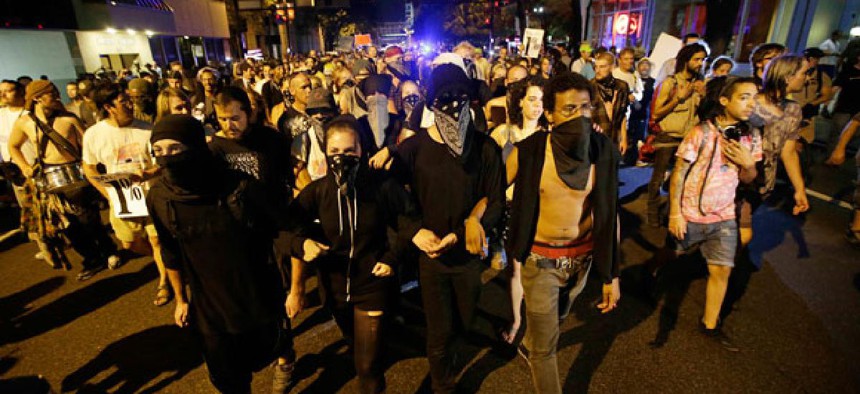ACLU: Public safety network raises police surveillance concerns

Protestors marched during the Republican National Convention in August. Dave Martin/AP
Analyst voices concerns about police capabilities and possible privacy abuse.
The American Civil Liberties Union is questioning whether a long-awaited national public safety broadband network could become a tool for a domestic secret police force.
"We shouldn't just accept that undercover police will infiltrate peaceful protesters exercising their First Amendment rights, photograph them, and use face recognition or other techniques to identity them," ACLU senior policy analyst Jay Stanley wrote in a blog post late Monday.
The post was a response to a National Journal report that detailed the first test of the potential public-safety network's capabilities during the Republican National Convention in Tampa. Police in the Tampa area say the broadband network and specialized apps allowed undercover officers to use off-the-shelf smartphones to send real-time video of protesters.
"If this network is going to be built, it ups the ante on police surveillance--making it more vital than ever that we enforce strict rules governing how surveillance is carried out," Stanley said.
He acknowledged that the network has the potential to help firefighters, paramedics, and police respond better to emergencies, but he said the report highlights how technology like smartphones, which have helped protestors, can also pose privacy concerns.
"Today's National Journal story is a reminder that most high-tech tools are double-edged, their impact on freedom up in the air and subject to contestation," he wrote.
Police say undercover police were not used to monitor free speech, but to ensure public safety during crowded events.
A nationwide public safety network is in the works. In addition to law-enforcement surveillance and communication, a future network could allow firefighters to transmit building plans to each other, or allow paramedics to review multimedia health records.


